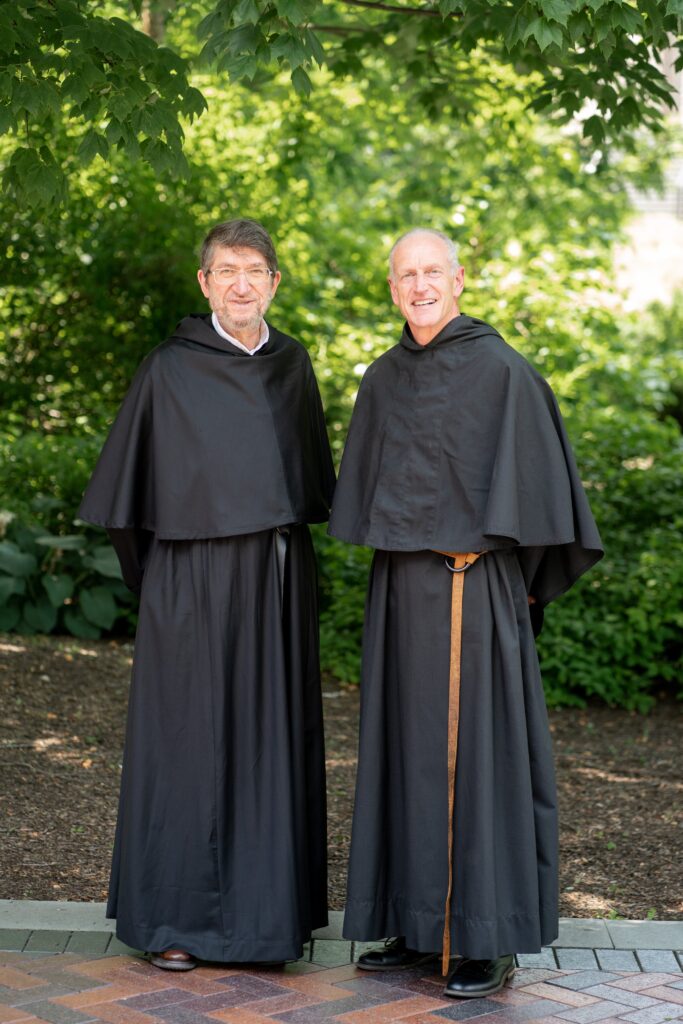
The Augustinian habit is not only full of historical stories, but also full of symbolism. (from the Liber Vitae Fratrum by Jordan of Saxony)
Black Color
The blackness of the habit signifies perfect contempt for all adonrments and beauty of this world. The color white is also used in placer where it is warmer.
Hood
It signifies charity; protects the mind from the cold of sins and the heat of temptations
Tunic
It expands into the form of a cross when the arms are extended and signifies a perpetual calling to mind of the Lord’s passion; the friar ought to be crucified to the world and its desires
Cincture/Belt
It signifies the putting to death of all our animal drives, especially in those parts which contain the source of lust.
An old story tells that the Virgin Mary appeared to Saint Augustine and Saint Monica, granting them the belt as a symbol of protection towards the Order.
Scapular
The scapular was a part of the habit; it signified a brace endurance of suffering – carrying the cross on our shoulders and conquering our vices.
The garment worn by the Augustinian friars is called a habit. Other religious orders also wear a distinctive habit that reminds the religious of their consecration to God. Ever since the thirteenth century, the Augustinians have worn a black habit made of wool, a less pretentious and prestigious material than linen.
The first instructions concerning the Augustinian habit were issued in 1244 by Cardinal Riccardo Annibaldi and later confirmed in decrees dated 1253 and 1255. From these instructions, we learn that the Augustinian habit was made up of: A loose tunic, belted at the waist by a cincture of leather; a hood; a white scapular tied with a cord; a staff, (a distinctive element of hermits’ attire, since the Augustinian Order was originally connected with the hermitic life; the use of the staff was abolished after the Grand Union of 1256) and Black leather shoes.
Novices meanwhile, wore a white tunic and scapular, a black ankle-length cape, and a cincture.
The habit worn by the Augustinians was considered ‘controversial’ during the 13th century because some groups within the newly-established Order did not comply with the rules and had worn habits similar to those of the Friars Minor and Friars Preacher, diverting the charity of the faithful – who took them to be Friars Minor or Friars Preacher – away from their intended recipients. But between the fourteenth and the sixteenth centuries, the Augustinian habit took shape. In the beginning, the style and form of the Augustinian habit recalled that of the hermits; only later did they conform to the customs of the mendicant orders.
With the start of the seventeenth century, the Augustinians’ clothing was subjected to changes and innovations. The tunic became fuller and rich in folds, the hood was enlarged to the point of completely covering the shoulders, the sleeves grew wider, the neckline of the tunic was decorated with a white collar, and the friar’s head was covered with a black skullcap shaped like a zucchetto.
Today, the Augustinian habit is made up of black woolen material, with long, wide sleeves, a black leather cincture, and a long-pointed capuche. In many Augustinian houses like here in the Philippines, a white habit is used in Summer and also worn in public. The scapular, according to some old friars, was “slowly and quietly removed” from the habit in the 1950s. (See Original Post: CLICK HERE)
© All Rights Reserved 2023 | Province of Santo Niño de Cebu - Philippines